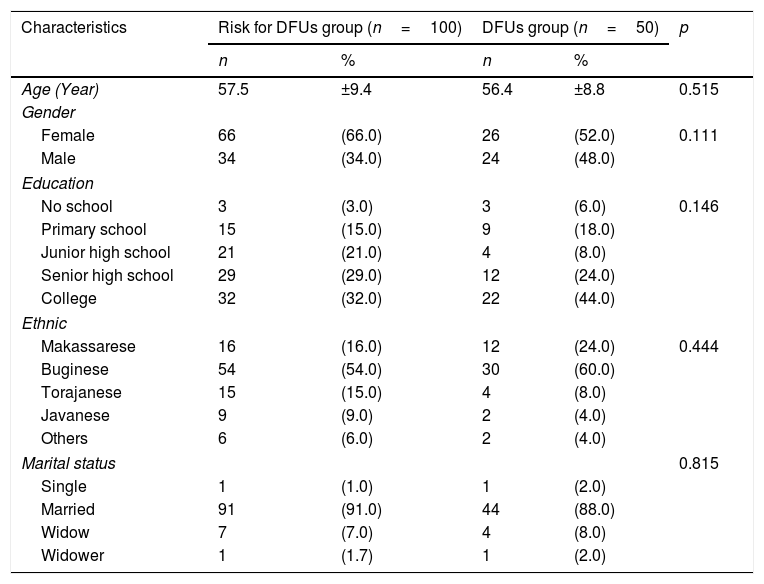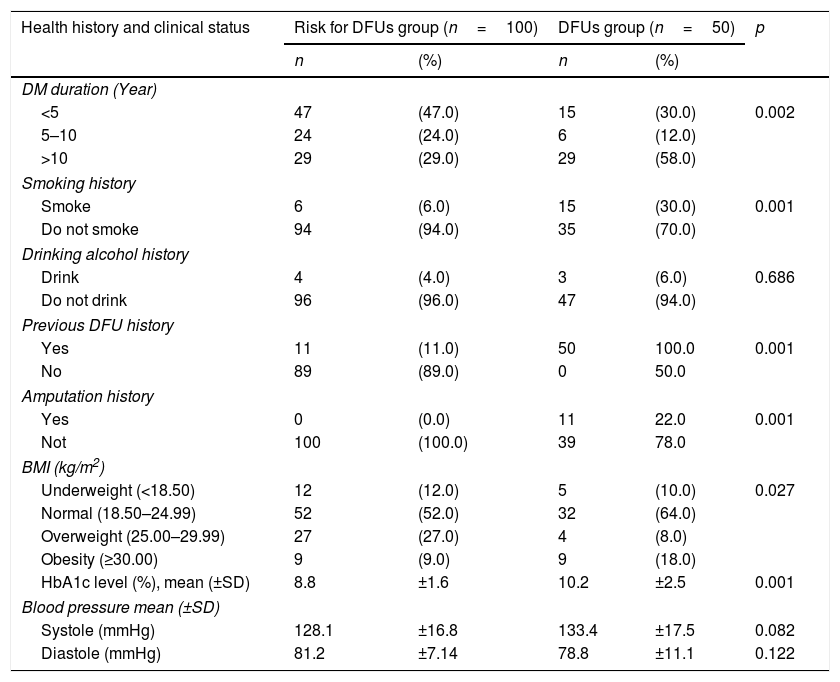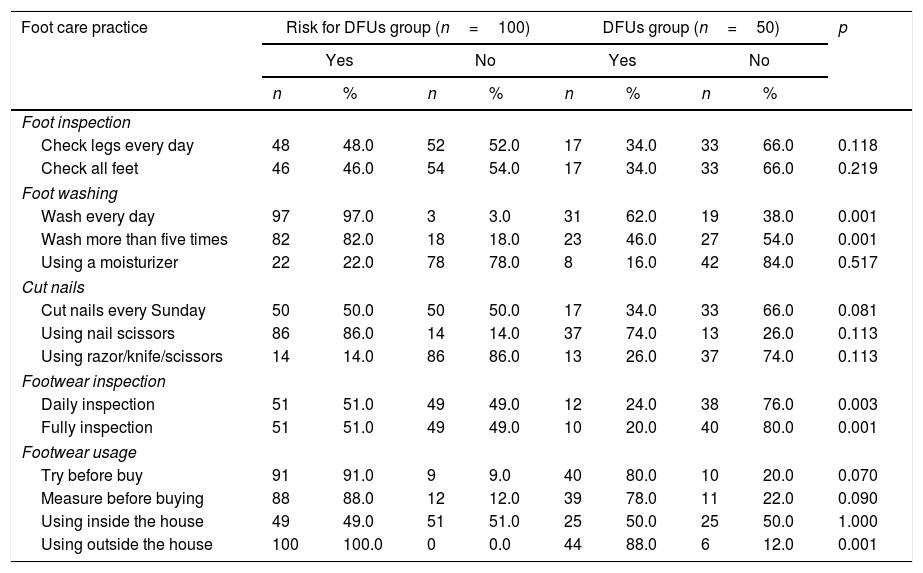The research aimed to investigate differences in foot care practice between participants at risk for and with diabetic foot ulcers (DFUs).
MethodsThe study design was quantitative with a cross-sectional approach. A total of 150 participants included in this study. Participants at risks for DFUs were measured using the 10g Semmes-Weinstein monofilaments for detecting neuropathy and the Ankle Brachial Index (ABI) Doppler for diabetic angiopathy. Data analyzed using chi-squared and Fisher's exact tests.
ResultsThere were significant differences in foot care between the risk for DFUs and DFUs groups, especially for foot washing, footwear inspection, and footwear usage domains (p<0.01). Those in the risk for DFUs group were more frequent and better in conducting foot care than those in the DFUs group.
ConclusionsPerforming routine foot care practices among people diagnosed with diabetes are essential for preventing the development and infection of DFUs.










